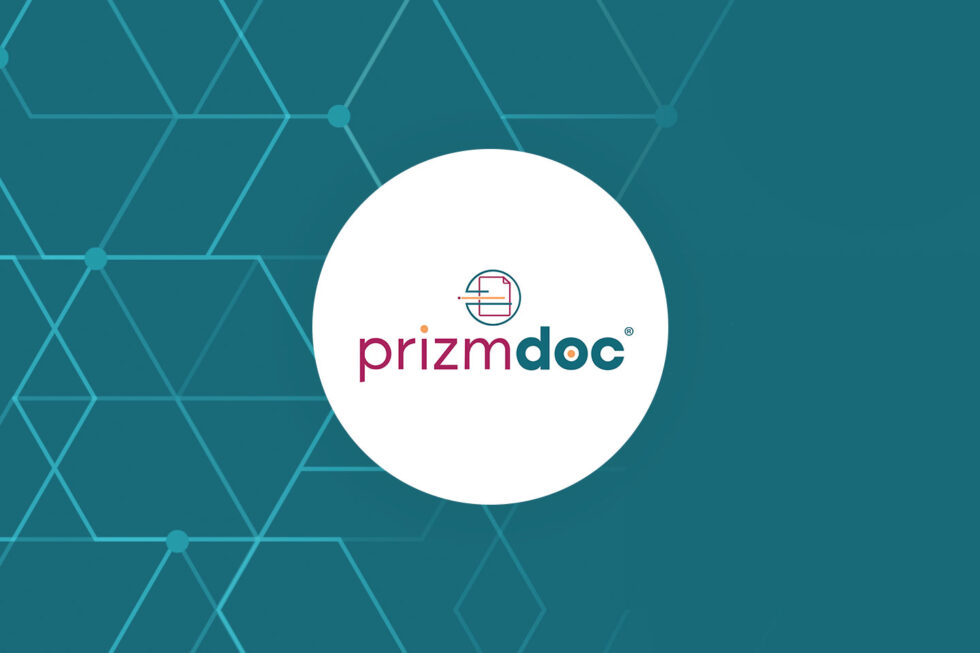How Accusoft’s PrizmDoc Improves Upon PDF.js

What Is PDF.js?
An open-source JavaScript PDF library, PDF.js was originally developed by the Mozilla Foundation in 2011 to serve as the built-in PDF viewer for the Firefox web browser. At the time, web browsers depended upon separate reader applications or browser plug-ins to view PDFs.
Unfortunately, this created several security risks. External plug-ins can contain malicious code or gather data that could endanger privacy. Downloading PDFs for local viewing is also potentially hazardous because it means the file must be removed from a secure application environment.
PDF.js uses Asynchronous JavaScript and XML (Ajax) to render PDFs as an HTML5 <canvas> element directly within a web application. Since it uses JavaScript for rendering, PDF.js is compatible with all modern browsers and doesn’t require any additional plug-ins.
In addition to being integrated into Firefox, the software was also made available as open-source code. This made it possible for independent developers to expand upon the core capabilities of PDF.js in the years since its release.
Should You Build or Buy a PDF.js Viewer?
The open-source availability of the PDF.js library makes it an attractive solution for software teams looking to add native viewing functionality to their applications. As with many open-source frameworks, however, developers may quickly run up against a few complications when building out a viewing solution from scratch.
Out-of-the-box, PDF.js consists of three basic layers:
- Core Layer: The heart of the JavaScript PDF library, this layer parses and interprets binary instructions from the file itself.
- Display Layer: This interface handles the actual rendering of the PDF into a <canvas> element.
- Viewer Layer: The primary viewing interface that allows users to view and interact with the document.
While the core and display layers can handle most documents, PDF.js doesn’t support the full PDF specification and sometimes struggles with rendering lengthy, complex, or image-heavy files. Overall performance is often on the slow side, and the way text is rendered makes text search somewhat unreliable.
More importantly, PDF.js lacks out-of-the-box mobile support. The included viewer doesn’t provide essential mobile UI features like pinch-to-zoom. It also doesn’t respond dynamically to mobile screens to ensure that menus and tools remain usable on all devices.
Any developer looking to add PDF viewing and editing capabilities to their web applications using PDF.js will need to solve these core issues. While features like responsive, mobile-friendly viewing may have been less important when PDF.js first released in 2011, they are considered essential by most users today. Unfortunately, building out these capabilities takes time and resources, which is something that few development teams have in abundance.
Integrating a ready-made viewer that combines the solid foundation of PDF.js with the innovative features users expect allows developers to quickly meet their project needs without pulling attention away from key aspects of their application.
Integrate PDF Solutions with Accusoft
While PDF.js has long served as an adequate open-source PDF viewing solution for web applications, today’s average user simply requires more functionality than PDF.js can provide on its own. For developers who lack the time, resources, or expertise necessary to build those additional features, Accusoft can help.
For over 30 years, Accusoft has helped organizations add essential features like viewing, file conversion, document assembly, and image compression to their applications through an innovative line of SDKs and APIs.
Our document lifecycle technologies are backed by multiple patents and have been incorporated successfully into a wide range of applications. Accusoft’s dedicated engineers provide ongoing support and work closely with customers to implement their specific use cases, ensuring that their software platform is delivering the best possible experience.
To learn more about PDF viewing and editing solutions from Accusoft, talk to one of our technology experts today.